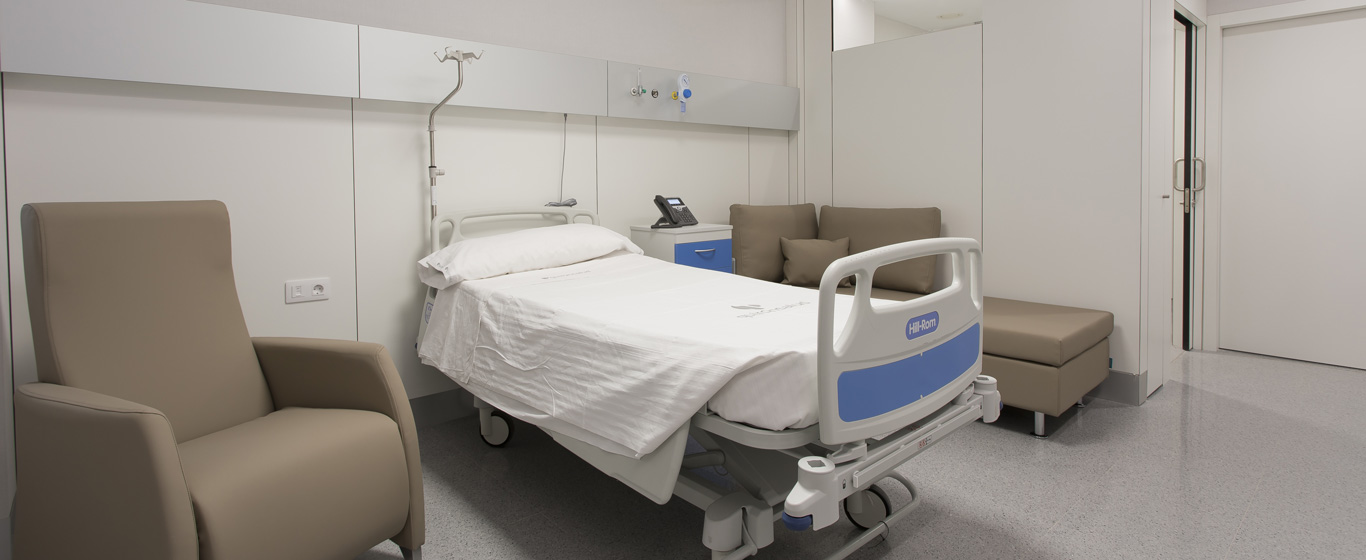Gonarthrosis
What is gonarthrosis? Everything about the causes, symptoms, and treatments for the different stages of knee osteoarthritis.
Symptoms and Causes
Gonarthrosis, or knee osteoarthritis, is a degenerative, chronic, and progressive disease that wears down the cartilage and reduces bone protection. As the bones rub against each other, they deteriorate, causing varying degrees of pain.
According to the Kellgren and Lawrence classification, there are different stages of gonarthrosis depending on the level of joint involvement:
- Stage 1 Gonarthrosis: The presence of the disease is uncertain. There may be a slight narrowing of the joint space and osteophytes—abnormal bone growth at the edges. The cartilage softens and may become pinched, causing discomfort.
- Stage 2 Gonarthrosis: The osteoarthritis is mild, with osteophytes and a possible narrowing of the joint space.
- Stage 3 Gonarthrosis: The condition is moderate. There is a clear narrowing of the joint space, cartilage fissures, bone growth at the edges, mild sclerosis, and a possible bone deformity.
- Stage 4 Gonarthrosis: The disease is in a severe stage. The narrowing of the joint space is pronounced, numerous osteophytes are present, cartilage rupture occurs, advanced sclerosis develops, and the ends of the bones become deformed.
Although gonarthrosis, like other forms of osteoarthritis, has no cure, the prognosis is positive thanks to advances in treatments and therapies that manage symptoms and reduce complications.
Symptoms
The symptoms of gonarthrosis vary depending on its stage. The most common symptoms include:
- Knee pain, which initially appears only during exercise. As the disease progresses, pain occurs with any movement or even at rest.
- Inflammation.
- A sensation of stiffness.
- Difficulty bending and extending the leg.
- Knee instability when bearing weight.
- Joint deformity.
- Misalignment of the bones.
Causes
Osteoarthritis is often a consequence of aging. Additionally, gonarthrosis can develop due to excess weight on the knees from obesity or repetitive use of the joint caused by sports activities or occupational demands.
Risk Factors
The likelihood of developing gonarthrosis increases with the following factors:
- Advanced age: Typically occurs after age 55.
- Obesity or overweight.
- Overuse of the knee.
- Trauma.
- Hip or ankle injuries that lead to compensatory or improper knee use.
- Sex: Although the reasons are unclear, gonarthrosis is more common in women, possibly due to hormonal changes during menopause.
Complications
Knee osteoarthritis can cause complications, especially if left untreated, such as:
- Meniscus tears.
- Limited mobility.
- Deformities in limb alignment: Genu varum causes the legs to spread apart, while genu valgum causes them to come together at the knees.
- Disability.
Prevention
While gonarthrosis cannot always be prevented, the following measures can help reduce the risk:
- Maintaining a healthy, balanced diet.
- Engaging in moderate, regular exercise.
- Avoiding obesity.
- Using protective gear when participating in contact sports or activities that put excessive strain on the knee, such as soccer, rugby, or weightlifting.
Which Doctor Treats Gonarthrosis?
Gonarthrosis is diagnosed and treated by rheumatologists and traumatologists. In cases requiring embolization, treatment is performed by interventional radiologists.
Diagnosis
The diagnostic process for gonarthrosis begins with anamnesis, during which the specialist assesses the patient’s overall health, habits, and symptoms. This is followed by various tests:
- Physical examination to assess knee condition and range of motion.
- X-ray: Provides images of the knee’s internal structure, particularly the joint space and bones.
- MRI or CT scan: Helps detect damage to soft tissues, such as cartilage and tendons.
Treatment
The treatment for gonarthrosis varies depending on the severity of the disease and the patient’s specific characteristics. Common approaches include:
- Oral medication: Pain relievers to ease discomfort or anti-inflammatory drugs to reduce swelling.
- Corticosteroid injections for rapid but temporary pain and inflammation relief.
- Infiltrations:
- Hyaluronic acid improves joint lubrication.
- Cultured stem cells relieve symptoms and slow disease progression.
- Knee surgery: If non-invasive treatments fail or disability occurs, surgical intervention may be necessary:
- Arthroscopy: Two small incisions are made to insert instruments for meniscus repair. While not commonly used for osteoarthritis, it can help alleviate discomfort.
- Osteotomy: The load-bearing axis is modified by cutting the femur or tibia. This is recommended for young patients with high physical activity levels.
- Arthroplasty: A total or partial knee prosthesis is implanted to restore function.
- Genicular artery embolization (GAE): A minimally invasive and painless technique for treating refractory pain in osteoarthritis patients. This procedure involves inserting a catheter into the knee’s arteries to inject microscopic particles that reduce blood flow to inflamed areas, thereby reducing swelling.






































































































